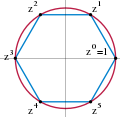
Schur multiplier

In mathematical group theory, the Schur multiplier or Schur multiplicator is the second homology group H 2 ( G , Z ) {displaystyle H_{2}(G,mathbb {Z} )} of a group G. It was introduced by Issai Schur (1904) in his work on projective representations. In mathematical group theory, the Schur multiplier or Schur multiplicator is the second homology group H 2 ( G , Z ) {displaystyle H_{2}(G,mathbb {Z} )} of a group G. It was introduced by Issai Schur (1904) in his work on projective representations. The Schur multiplier M ( G ) {displaystyle operatorname {M} (G)} of a finite group G is a finite abelian group whose exponent divides the order of G. If a Sylow p-subgroup of G is cyclic for some p, then the order of M ( G ) {displaystyle operatorname {M} (G)} is not divisible by p. In particular, if all Sylow p-subgroups of G are cyclic, then M ( G ) {displaystyle operatorname {M} (G)} is trivial. For instance, the Schur multiplier of the nonabelian group of order 6 is the trivial group since every Sylow subgroup is cyclic. The Schur multiplier of the elementary abelian group of order 16 is an elementary abelian group of order 64, showing that the multiplier can be strictly larger than the group itself. The Schur multiplier of the quaternion group is trivial, but the Schur multiplier of dihedral 2-groups has order 2. The Schur multipliers of the finite simple groups are given at the list of finite simple groups. The covering groups of the alternating and symmetric groups are of considerable recent interest. Schur's original motivation for studying the multiplier was to classify projective representations of a group, and the modern formulation of his definition is the second cohomology group H 2 ( G , C × ) {displaystyle H^{2}(G,mathbb {C} ^{ imes })} . A projective representation is much like a group representation except that instead of a homomorphism into the general linear group GL ( n , C ) {displaystyle operatorname {GL} (n,mathbb {C} )} , one takes a homomorphism into the projective general linear group PGL ( n , C ) {displaystyle operatorname {PGL} (n,mathbb {C} )} . In other words, a projective representation is a representation modulo the center. Schur (1904, 1907) showed that every finite group G has associated to it at least one finite group C, called a Schur cover, with the property that every projective representation of G can be lifted to an ordinary representation of C. The Schur cover is also known as a covering group or Darstellungsgruppe. The Schur covers of the finite simple groups are known, and each is an example of a quasisimple group. The Schur cover of a perfect group is uniquely determined up to isomorphism, but the Schur cover of a general finite group is only determined up to isoclinism. The study of such covering groups led naturally to the study of central and stem extensions. A central extension of a group G is an extension
